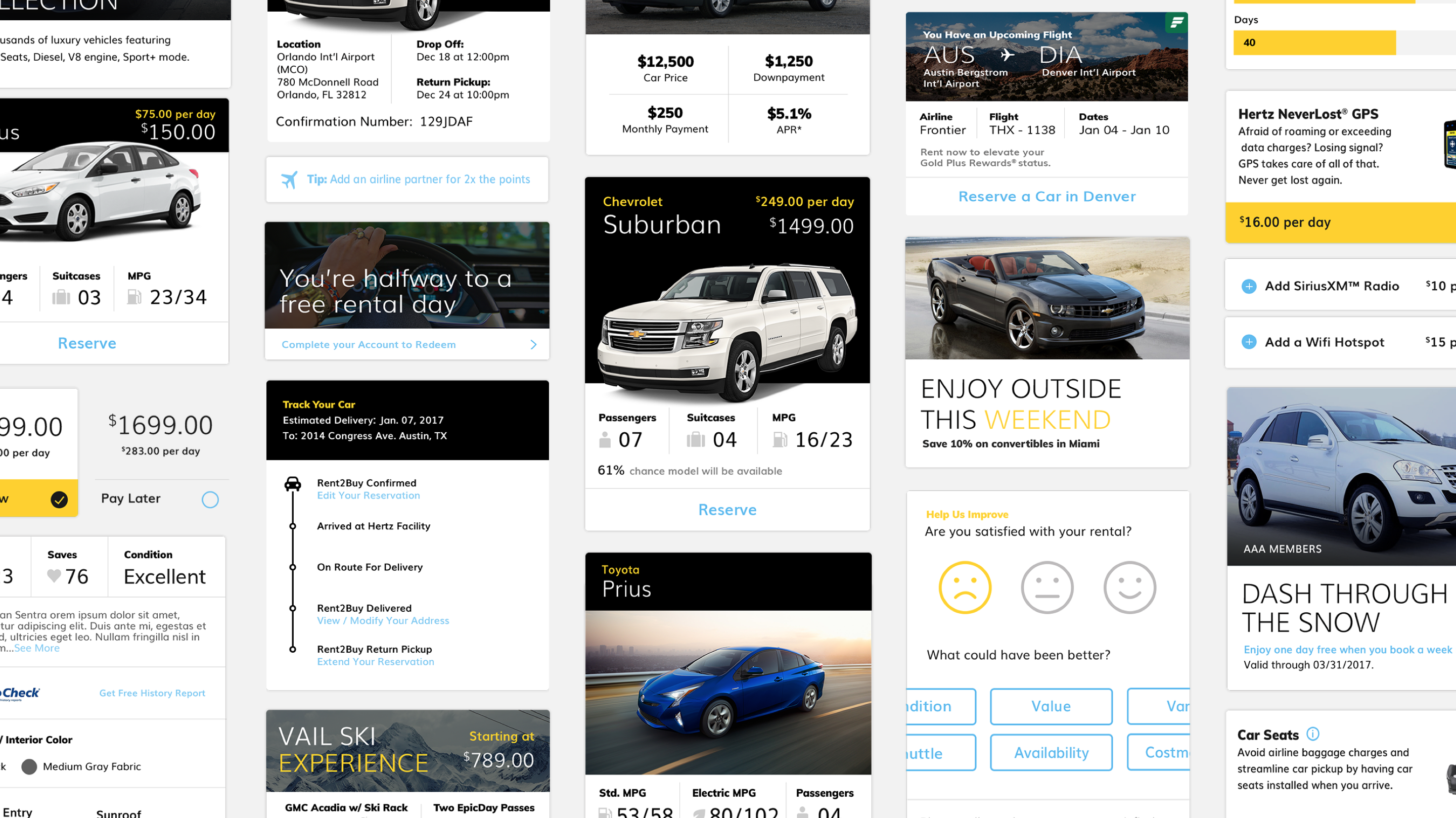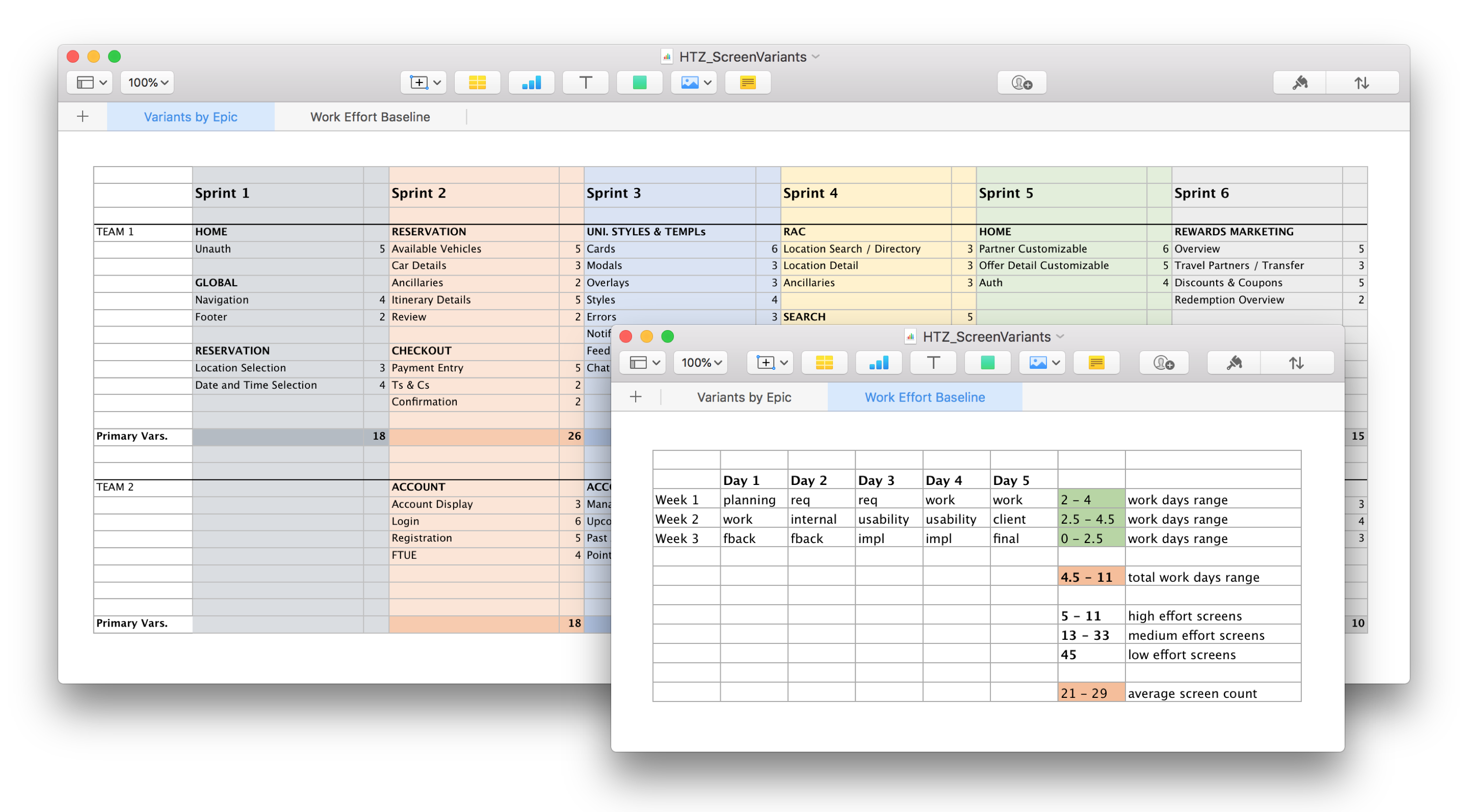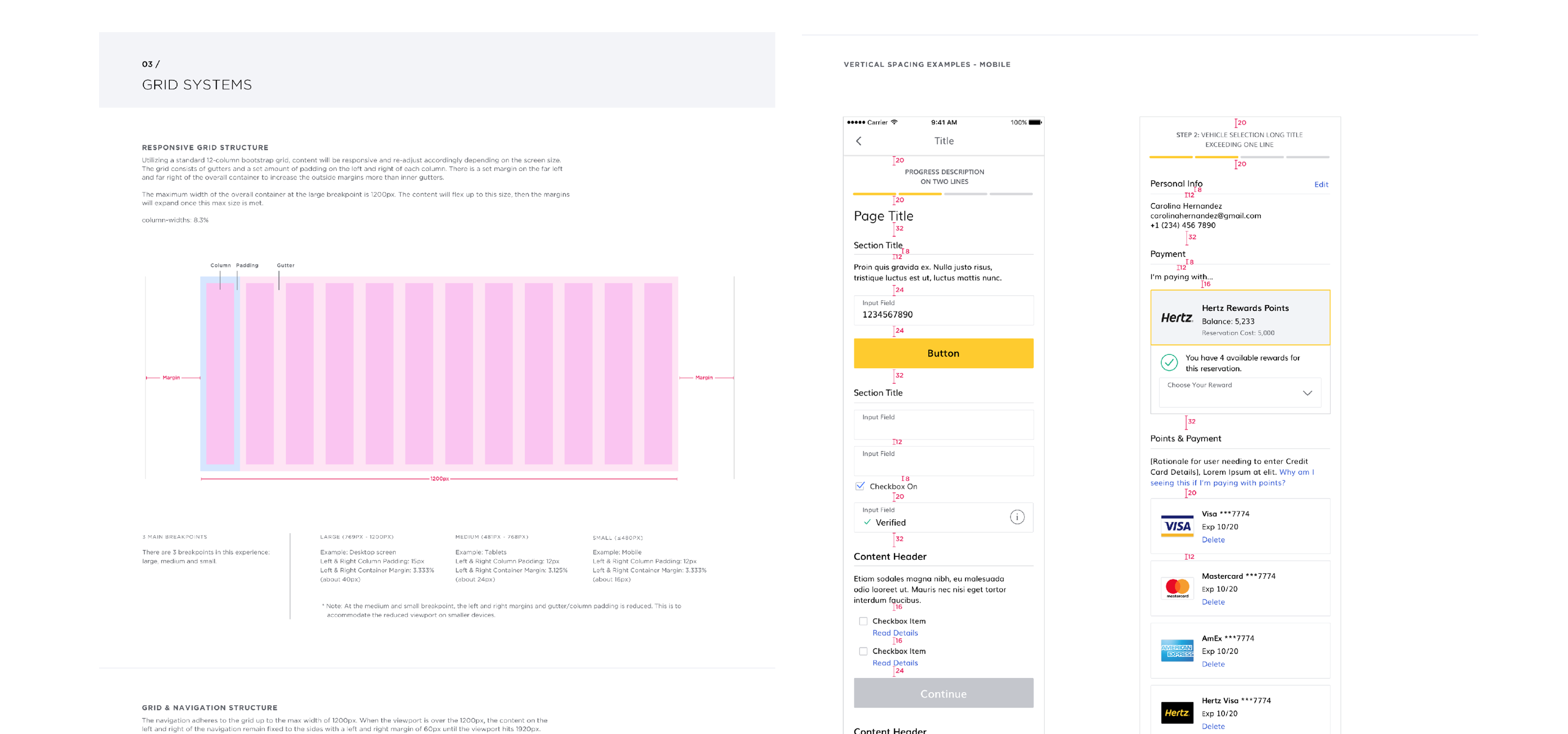
By the time I found myself sitting at their massive oak conference table, Hertz was in bad shape.
Years of negative earnings reports. Painful financial restatements. Multiple changes in C-suite leadership. A wrenching relocation of their headquarters from New Jersey to Florida that precipitated a wave of senior level departures. Internal IT restructuring. Tanking customer sentiment.
What they needed, they said, was not just a redesigned native app experience geared toward ‘touchless’ rental (though that was important); they needed a high profile product release that would prove to the market in general (and their shareholders in particular) that they recognized the severity of their situation and were making tangible forward progress.
After six long months of Accenture's account development — this would be Chaotic Moon’s first Accenture-partnered project following our acquisition by the consulting giant — the scope of our Hertz work would balloon to no less than a complete digital revolution for the century old business: a design and technology overhaul that would extend from front end to backend systems modernization; across every aspect of digital experience — including sibling brands Dollar and Thrifty, Hertz used car sales, and the entirety of their international divisions.
... And we’d been signed up to deliver it in 11 months. Accounting for QA and other required system testing — and by implementing as agile a process as possible — our design team would have six months to reimagine Hertz' entire ecosystem.
At the crux of our initial proposal was a deeply personalized and predictive digital experience: a robust user profile that drew from data integrations with complementary applications and services — itinerary information from airlines and integrators, for example — and that offered complementary products and services in return, such as in-car deliveries and localized discount coupons.
Our strategic goal was not only to deliver a more engaging customer experience, but create a dialogue with the user that could open up sales and service opportunities in a phase of travel Hertz had long neglected: pre-arrival and on-rental.

The interaction model we crafted simple: a card-based feed of products and services that would update and adapt according to available data. Data, in turn, would be drawn from the user's past purchase history, on-device sensors and other system sources, and a series of external integrations — travel aggregators, complementary service providers, and so on.
The model was designed around four interaction options:
Each card represented a microinteraction with the brand, and therefore provided a single data point. Card interactions could then be paired with other data sets to better tailor and target the feed.
Does additional insurance sell better on rainy days? Does higher expected mileage and business travel influence vehicle upgrades? Do families with more than one child in a car seat tend to prepay for fuel? The more active engagement we could encourage, the better we could understand the customer's needs.


But it wasn't just the user research insights we'd need to produce: as a creative lead and a de facto member of the account team, one of my major responsibilities was building relationships and consensus across a fractious group of 14 separate, competing business units. Intensive, primary user research was a given, but in order to break down Hertz' institutional silos — a critical factor in achieving stakeholder alignment on success metrics — I would need to bring our clients directly into the research process.
There is an inherent risk in exposing clients to raw research; without close and careful management, it's common for stakeholders to leave a session with different, outlying, or potentially contradictory conclusions. But for a company with so little experience in design and such a strong focus on their own business structure, research participation was the most direct and visceral means of shaking them free of their entrenched, internal perspectives.

While personas are not without their drawbacks, ours allowed us to make the professional personal: stakeholders were brought together from across all business units and asked to act out scenarios together as the characters we'd crafted. The section of user journey below may be indecipherable here, but it was designed at 4 feet tall by nearly twenty feet long to support the role playing our stakeholders participated in. At each step of the journey, we would discuss a user's emotional state, actions and needs, and current challenges; before we moved to the next step, we would walk through a series of 'how might we' solution explorations, primed with our team's identification of opportunity areas.

Another integral tool for getting our clients into a user centered mindset was our competitive audit. While reviewing rental industry competitors was part of due diligence, it was key to include a series of perceptual competitors. Sites or platforms like Amazon Prime, Simple Bank, and Uber helped them internalize the fact that their users weren't just comparing them to Enterprise or Avis — that their digital experience expectations were formed by best in class, digital native companies.

The refined concept they would ultimately approve closely resembled our initial proposal, but greatly expanded the variety of content, product, and service combinations. But the bigger strategic idea would take that concept another step further: atomization.
In 2013, Brad Frost introduced an operational concept called Atomic Design. Atomic Design conceived of what we would now call a design system in biochemical terms: at its most discrete, an element of the design system is considered an atom (an element); collections of atoms become a molecule (a component or pattern), and groups of molecules become an organism (a template).
The Atomic approach held immediate appeal for us: not only would it help maintain design integrity and coherence across multiple platforms and form factors, but it would also enable our 26 person design team to coordinate and collaborate more effectively. Perhaps most significantly, this systematic, structured, and predictable method would facilitate the kind of communication and efficiency crucial to supporting our massive, offshore Accenture development team.
In this model, each piece of content or functionality that held discrete user value (whether actual copy or media, product, or service) would be considered an ‘atom’ to be surfaced to users individually or in combination (‘molecule’) according to an algorithm. This atomic perspective not only allowed highly focused user targeting, but also enabled the outbound integration of Hertz products and services, much like APIs into compatible systems — Alexa skills, partner applications, message app extensions, etc.




The Atomic metaphor — both in terms of content, and in terms of design and development — and the card based customer dialogue created what we termed a system rather than a product. Much as I would later propose to Halliburton, this empowered our stakeholder business units to focus on value creation rather than simply TKTKTKTKTKT system maintenance. Our broader goal was to shift Hertz’ internal perspective from products (punctuated snapshots of requirements) to systems (patterns that constantly grow and evolve).
By way of a digital overhaul, we were trying to give Hertz the business tools to reinvent themselves — from the inside out.

# something
with ongoing contract disputes and periodic unforeseen work stoppages, detailed documentation was critical. our atomic design system proved effective as an organizing and aligning structure, but administering the 500+ person team and 30+ client approvers was a daily challenge. the choreography of designers, artifacts, internal and external reviews, feedback and resolution, and ultimate approval workflows required intense focus.







in addition to a system of Jira ticket-Confluence spec pairs, comprehensive annotated wireframes and system maps were prepared for client review. feedback and design revision notes were carefully documented in persistent revision history tables that accompanied each batch of work - dates, feedback notes, provider name, reconciliation or resolution, and responsible teammate.



in order to help ground clients as the design fidelity increased, visual compositions were bundled with the wireframes they represented. animations were included alongside motion specifications to assist development teams in effectively executing designs. development leads were involved throughout the discovery, definition, and delivery process, and invited to contribute rather than simply preempt potential issues.
using a dedicated design research team, usability testing was conducted roughly every two to three weeks, and was adapted to whatever level of fidelity stimulus was available. as with our generative user research, client partners were invited to both observe and actively participate in the usability tests (albeit through our own moderators).
# wrap up
Hertz was an incredible, demanding, stressful, nearly two year experience. It was the biggest single design team Chaotic Moon had ever assembled at 26 individuals; at its height, more than half of the studio was working on it. Over the course of the project, we would see two Hertz CEOs and the resignation of our primary client, CMO Matt Jachius. New branding would be introduced mid-discovery. Project delivery leadership would change twice, and our own studio leadership would see two significant departures.
It’s hard to overstate the significance of this project; to the studio, but also to my own growth and development as a leader. Never before or since have I been so challenged in client management, project management, communication, personnel management, sales, product strategy, and more. It was far from perfect and it took a great physical and mental toll on me. But I stand by the quality and ingenuity of the work we delivered, and I will never forget the lessons learned or the friendships forged.
We delivered excellent work that exceeded expectations. But maybe more importantly, we also shifted Hertz’ perspective on their customers and their business. And in the end, that’s where the real value lies.


Though the experience structure is generally consistent, the state specific circumstances can be quite different. The shared solution would need to support
- different levels of client technological sophistication
- different qualitative and quantitative success metrics
- different numbers of programs offered
- different technology platforms
Though the experience structure is generally consistent, the state specific circumstances can be quite different. The shared solution would need to support
- different levels of client technological sophistication
- different qualitative and quantitative success metrics
- different numbers of programs offered
- different technology platforms